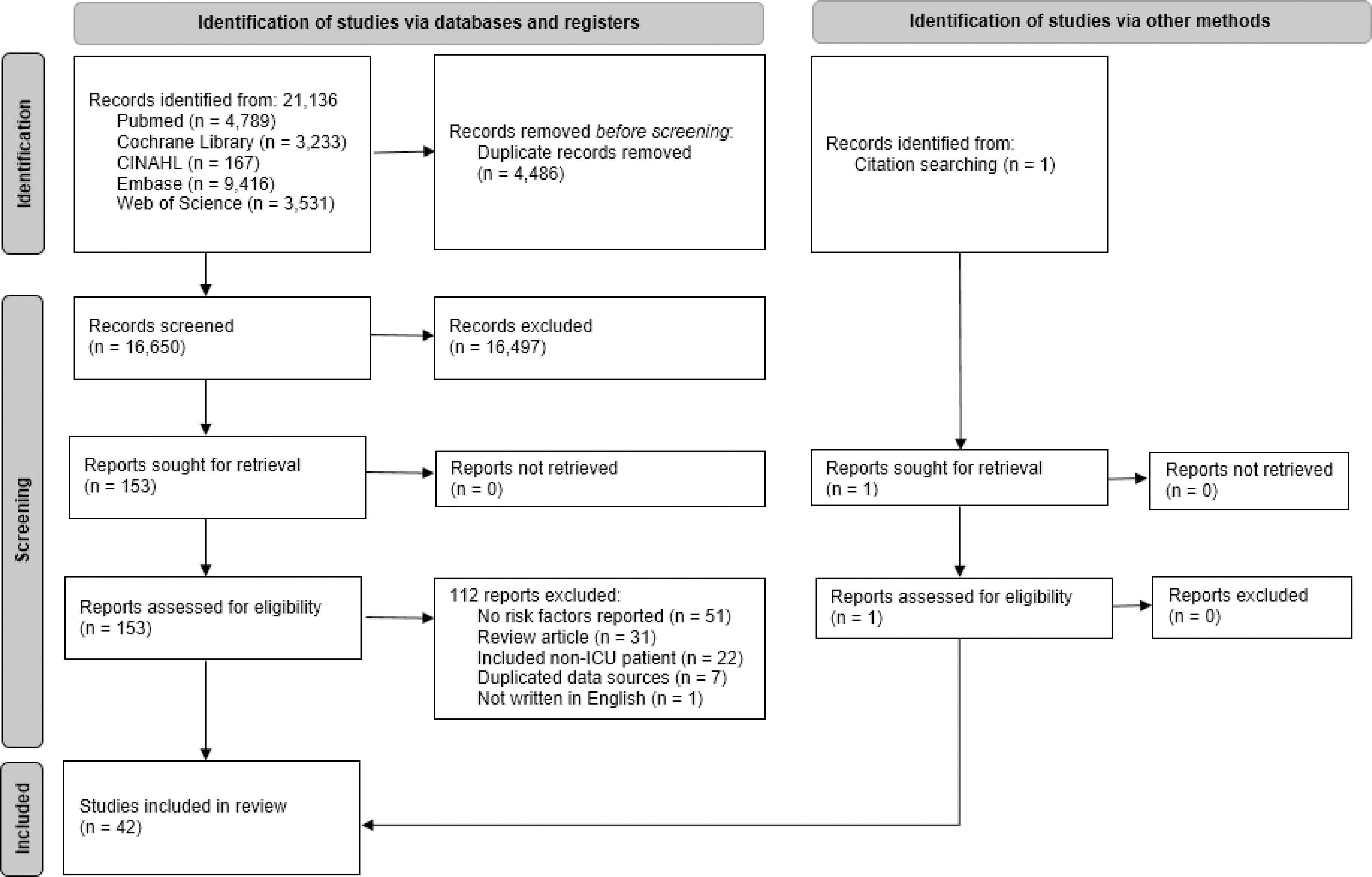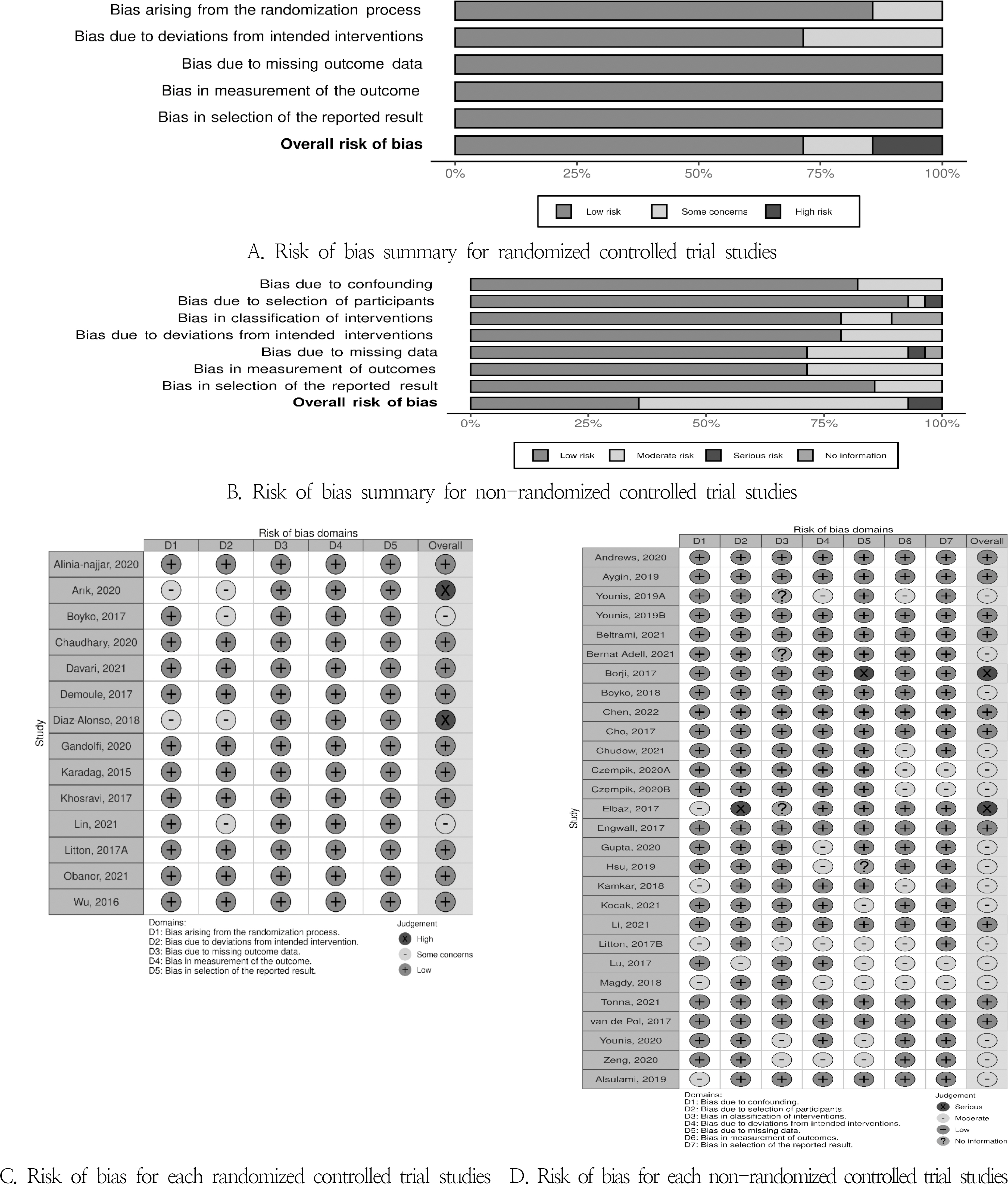1.Toyoshima K, Inoue T, Shimura A, Uchida Y, Masuya J, Fujimura Y, et al. The mediating effects of perceived cognitive disturbances on reported sleep disturbance, presenteeism, and functional disability in Japanese adult workers.
Journal of Affective Disorders Reports. 2021;
5, 100180.
https://doi.org/10.1016/j.jadr.2021.100180

2.Devlin JW, Skrobik Y, Gélinas C, Needham DM, Slooter AJ, Pandharipande PP, et al. Clinical practice guidelines for the prevention and management of pain, agitation/sedation, delirium, immobility, and sleep disruption in adult patients in the ICU.
Critical Care Medicine. 2018;
46(9):e825–e873.
http://10.1097/CCM.0000000000003299


4.Altman MT, Knauert MP, Murphy TE, Ahasic AM, Chauhan Z, Pisani MA. Association of intensive care unit delirium with sleep disturbance and functional disability after critical illness: an observational cohort study.
Annals of Intensive Care. 2018;
8(63):
https://doi.org/10.1186/s13613-018-0408-4

5.Tembo AC, Parker V, Higgins I. The experience of sleep deprivation in intensive care patients: findings from a larger hermeneutic phenomenological study.
Intensive and Critical Care Nursing. 2013;
29(6):310–316.
https://doi.org/10.1016/j.iccn.2013.05.003

7.Nilius G, Richter M, Schroeder M. Updated perspectives on the management of sleep disorders in the intensive care unit.
Nature and Science of Sleep. 2021;
13, 751–62.
https://doi.org/10.2147/NSS.S284846



8.Trompeo AC, Vidi Y, Locane MD, Braghiroli A, Mascia L, Bosma K, et al. Sleep disturbances in the critically ill patients: role of delirium and sedative agents.
Minerva Anestesiologica. 2011).
77(6):604–12.

9.Parsons EC, Kross EK, Caldwell ES, Kapur VK, McCurry SM, Vitiello MV, et al. Post-discharge insomnia symptoms are associated with quality of life impairment among survivors of acute lung injury.
Sleep Medicine. 2012;
13(8):1106–1109.
https://doi.org/10.1016/j.sleep.2012.05.010



10.Chen L, Zheng J, Lv S, Li B, Yang L. Impact of a sleep promotion protocol on off-pump coronary artery bypass graft patients.
Nursing in Critical Care. 2022;
27(2):214–22.
https://doi.org/10.1111/nicc.12637


11.Czempik PF, Jarosinska A, Machlowska K, Pluta MP. Impact of sound levels and patient-related factors on sleep of patients in the intensive care unit: a cross-sectional cohort study.
Scientific Reports. 2020;
10(1):
https://doi.org/10.1038/s41598-020-76314-9

12.Elbaz M, Leger D, Sauvet F, Champigneulle B, Rio S, Strauss M, et al. Sound level intensity severely disrupts sleep in ventilated ICU patients throughout a 24-h period: a preliminary 24-h study of sleep stages and associated sound levels.
Annals of Intensive Care. 2017;
7(25):
http://10.1186/s13613-017-0248-7


13.Younis MKB, Hayajneh FA, Alduraidi H. Effectiveness of using eye mask and earplugs on sleep length and quality among intensive care patients: A quasi-experimental study.
International Journal of Nursing Practice. 2019;
25(3):
https://doi.org/10.1111/ijn.12740

14.Boyko Y, Jennum P, Oerding H, Lauridsen JT, Nikolic M, Toft P. Sleep in critically ill, mechanically ventilated patients with severe sepsis or COPD.
Acta Anaesthesiologica Scandinavica. 2018;
62(8):1120–6.
https://doi.org/10.1111/aas.13140

15.Gupta P, Martin JL, Needham DM, Vangala S, Colantuoni E, Kamdar BB. Use of actigraphy to characterize inactivity and activity in patients in a medical ICU.
Heart and Lung. 2020;
49(4):398–406.
https://doi.org/10.1016/j.hrtlng.2020.02.002



16.Magdy DM, Metwally A, Makhlouf HA. Study of sleep quality among patients admitted to the respiratory intensive care unit.
Egyptian Journal of Bronchology. 2019;
13(1):114–9.
https://doi.org/10.4103/ejb.ejb_10_18

17.Page MJ, McKenzie JE, Bossuyt PM, Boutron I, Hoffmann TC, Mulrow CD, et al. The PRISMA 2020 statement: an updated guideline for reporting systematic reviews.
International Journal of Surgery. 2021;
88, 105906.
https://doi.org/10.1016/j.ijsu.2021.105906

18.Sterne JA, Herná n MA, Reeves BC, Savović J, Berkman ND, Viswanathan M, et al. ROBINS-I: a tool for assessing risk of bias in non-randomised studies of interventions.
BMJ. 2016;
355, i4919.
https://doi.org/10.1136/bmj.i4919



19.Sterne JA, Savović J, Page MJ, Elbers RG, Blencowe NS, Boutron I, et al. RoB 2: a revised tool for assessing risk of bias in randomised trials.
BMJ. 2019;
366, 1–8.
http://doi.org/10.1136/bmj.l4898

20.Caruso P, Guardian L, Tiengo T, dosSantos L, Junior PM. ICU architectural design affects the delirium prevalence: a comparison between single-bed and multibed rooms.
Critical Care Medicine. 2014;
42(10):2204–2210.
https://doi.org/10.1097/CCM.0000000000000502


21.Johansson L, Lindahl B, Knutsson S, Ogren M, Waye KP, Ringdal M. Evaluation of a sound environment intervention in an ICU: a feasibility study.
Australian Critical Care. 2018;
31(2):59–70.
https://doi.org/10.1016/j.aucc.2017.04.001

22.Bernat Adell MD, Galarza Barrachina L, Bisbal André s E, Cebriá n Graullera G, Pagés Aznar G, Morá n Marmaneu M, et al. Factors affecting sleep quality in Intensive Care Units.
Medicina Intensiva (English Edition). 2021;
45(8):470–6.
https://doi.org/10.1016/j.medine.2021.08.011

25.Zeng Z, Guan Y. Influence of humanized care on self-efficacy, sleep and quality of life of patients in cardiovascular surgery intensive care unit.
American Journal of Translational Research. 2021).
13(5):4884–91.


26.Alinia-najjar R, Bagheri-Nesami M, Shorofi SA, Mousavinasab SN, Saatchi K. The effect of foot reflexology massage on burn-specific pain anxiety and sleep quality and quantity of patients hospitalized in the burn intensive care unit (ICU).
Burns. 2020;
46(8):1942–51.
https://doi.org/10.1016/j.burns.2020.04.035


27.Hsu WC, Guo SE, Chang CH. Back massage intervention for improving health and sleep quality among intensive care unit patients.
Nursing in Critical Care. 2019;
24(5):313–9.
https://doi.org/10.1111/nicc.12428


28.Diaz-Alonso J, Smith-Plaza AM, Suarez-Mier B, Lana A. Impact of a nurse intervention to improve sleep quality in intensive care units results from a randomized controlled trial.
Dimensions of Critical Care Nursing. 2018;
37(6):310–7.
http://doi.org/10.1097/DCC.0000000000000319

30.Pisani MA, Friese RS, Gehlbach BK, Schwab RJ, Weinhouse GL, Jones SF. Sleep in the intensive care unit.
American Journal of Respiratory and Critical Care Medicine. 2015;
191(7):731–738.
https://doi.org/10.1164/rccm.201411-2099CI



31.Adams CL, Elizabeth A, Andrade C, Maynard S, Snow K, Olson TL, et al. Implementing clinical practice guidelines for screening and detection of delirium in a 21-hospital system in Northern California real challenges in performance improvement.
Clinical Nurse Specialist. 2015;
29(1):29–37.
http://doi.org/10.1097/NUR.0000000000000098

32.Lightfoot M, Sanders A, Burke C, Patton J. Clinical pharmacist impact on intensive care unit delirium: intervention and monitoring.
Hospital Pharmacy. 2019;
54(3):180–185.
https://doi.org/10.1177/0018578718778226














